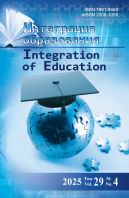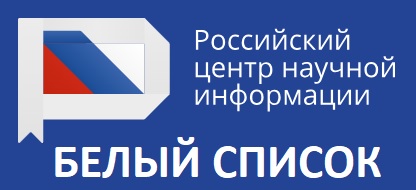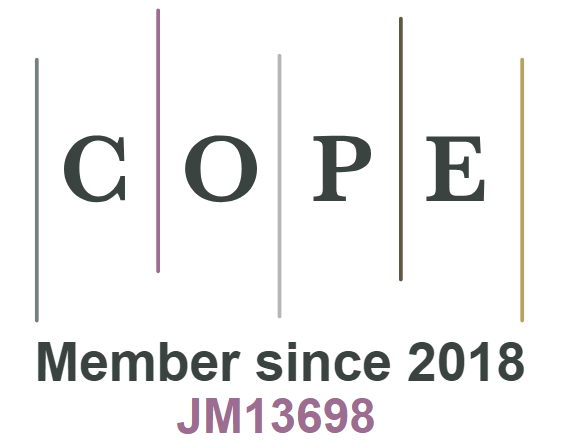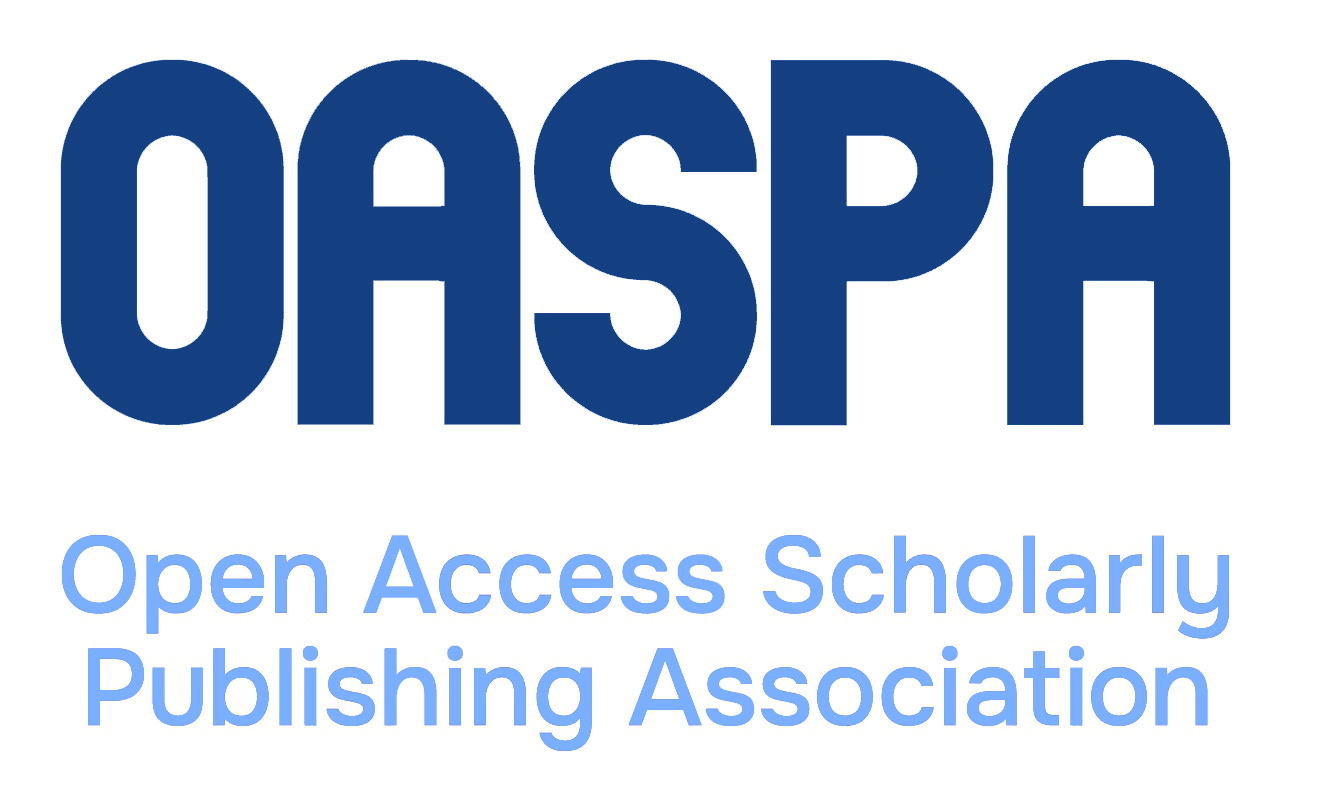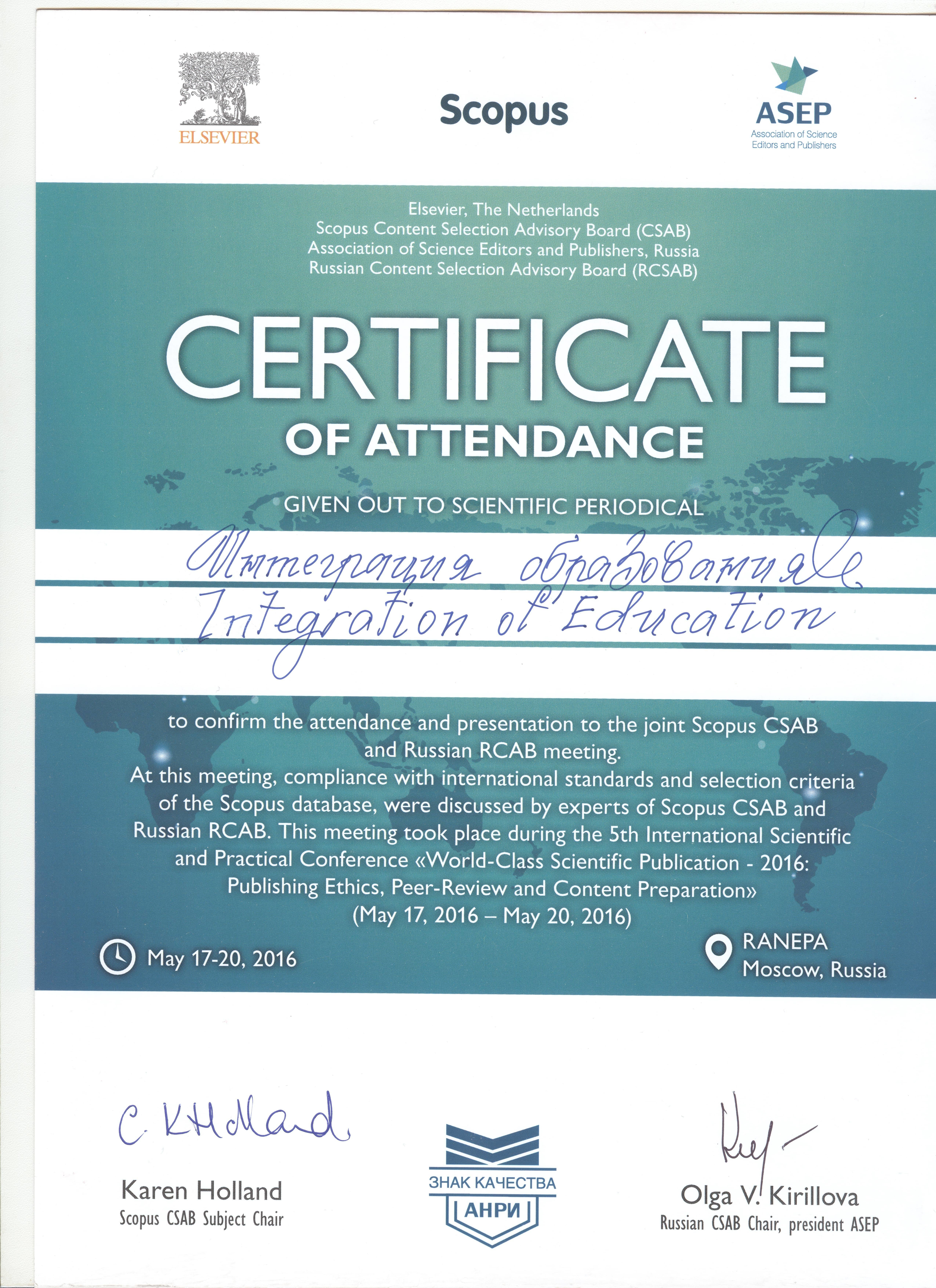DOI: 10.15507/1991-9468.029.202501.028-048
UDC 008:37:811.161.1(676.2)
Analysing the Resource Potential of an Intercultural Model as a Tool for Designing Russian-Language Educational Activities in the Republic of Kenya
Valeriya M. Lemskaya
Cand.Sci. (Philol.), Deputy Director of the Institute of Foreign Languages and International Cooperation, Tomsk State Pedagogical University (60 Kievskaya St., Tomsk 634061, Russian Federation), ORCID: https://orcid.org/0000-0003-3644-3463, Scopus ID: 57148428900, Researcher ID: AAQ-6548-2021, SPIN-code: 4639-0510, This email address is being protected from spambots. You need JavaScript enabled to view it.
Anna V. Kuryanovich
Dr.Sci. (Philol.), Associate Professor, Head of the Chair of Language Theory and Methods of Teaching Russian at the Chair of History and Philology, Tomsk State Pedagogical University (60 Kievskaya St., Tomsk 634061, Russian Federation), ORCID: https://orcid.org/0000-0002-3247-3975, Scopus ID: 57221665908, Researcher ID: JHT-8265-2023, SPIN-code: 2715-8557, This email address is being protected from spambots. You need JavaScript enabled to view it.
Vadim Yu. Zyubanov
Cand.Sci. (Ped.), Head of the International Cooperation Chair of the Institute of Foreign Languages and International Cooperation, Tomsk State Pedagogical University (60 Kievskaya St., Tomsk 634061, Russian Federation), ORCID: https://orcid.org/0000-0002-5032-4543, Scopus ID: 56381611000, Researcher ID: F-1468-2017, SPIN-code: 6786-1330, This email address is being protected from spambots. You need JavaScript enabled to view it.
Anna V. Ageeva
Expert of the Chair of International Cooperation of the Institute of Foreign Languages and International Cooperation, Tomsk State Pedagogical University (60 Kievskaya St., Tomsk 634061, Russian Federation), ORCID: https://orcid.org/0000-0001-9901-4741, Researcher ID: JHU-2642-2023, SPIN-code: 4243-4072, This email address is being protected from spambots. You need JavaScript enabled to view it.
Abstract
Introduction. Russia’s involvement in intercultural interaction defines the urgency of promoting Russianlanguage education abroad. Given the expanding contacts between Russia and Africa, it is essential to consider this issue in light of the countryspecific characteristics of the interacting linguocultural communities. Existing research inadequately addresses the design of Russianlanguage educational activities in East African countries (specifically the Republic of Kenya). The article aims to analyze the functional capabilities of an intercultural model for promoting the Russian language, Russian culture, and the standards of Russian education in the Republic of Kenya.
Materials and Methods. The complex theoretical and experimental methodology of the research included an analytical review, systematization and generalization of scientific information, a sociological survey in the form of an online questionnaire and a modelling technique. 167 people – potential students of the Center for Open Education in the Republic of Kenya – participated in the survey. The material of the research included the facts of Russian and Kenyan cultures, whose characteristic features are stability, typification, axiological significance, and the ability to mark national identity. The data were processed using the method of statistical calculation and generalisation.
Results. An educational model has been developed, grounded in key principles of intercultural communication theory. The model’s units are cultural patterns – stable, axiologically significant forms of national consciousness and national identity for a specific cultural community. Features unique to the integration of this model into the Kenyan educational landscape have been identified. Factors determining the content of this model have been analyzed, including the use of the Russian language as a means of intercultural dialogue and a tool for educational activities, and reliance on linguocultural manifestations of the mentality of the interacting peoples. Survey data has been obtained to objectify the content of the projected model, aligning it as closely as possible with the needs of Kenyan culture bearers.
Discussion and Conclusion. The obtained results solve the problem of organizing educational institutions in a modern multicultural space and promote the standards of Russian education, the Russian language and Russian culture in African countries, particularly in the Republic of Kenya, with the help of an intercultural model of education.
Keywords: intercultural communication theory, cultural patterns, language culture, intercultural education model, education space in African countries, international secondary school, educational activities in the Russian language in the Repubic of Kenya
Funding: The study was conducted as part of the research work “Substantiation of the applied significance of studying the needs and aspirations for education in the Russian language and the study of the Russian language and Russian culture in the Republic of Kenya with the aim of their effective promotion” (No. QZOY-2024-0014), which was carried out with the financial support of the Ministry of Education of the Russian Federation under the framework of the state assignment.
Acknowledgments: The authors would like to thank the reviewers for their support, whose comments helped improve the article’s structure and content.
Conflict of interests: The authors declare no conflict of interest.
For citation: Lemskaya V.M., Kuryanovich A.V., Zyubanov V.Yu., Ageeva A.V. Analysing the Resource Potential of an Intercultural Model as a Tool for Designing RussianLanguage Educational Activities in the Republic of Kenya. Integration of Education. 2025;29(1):28–48. https://doi.org/10.15507/19919468.029.202501.028048
Author’s contribution:
V. M. Lemskaya – conduction a research and investigation pocess; specifically data collection; application of formal techniques to analyze study data; specifically visualization.
A. V. Kuryanovich – development of the research concept; management activities to produce metadata for initial use and later reuse; conducting a rearch and investigation pocess; specifically writing the initial draft.
V. Yu. Zyubanov – coordination responsibility for the research activity planning and execution; conducting a rearch and investigation pocess; specifical critical review.
A. V. Ageeva – management activites to produce metadata for initial use and later reuse.
Availability of data and materials. The datasets used and/or analysed during the current study are available from the authors on reasonable request.
All authors have read and approved the final manuscript.
Submitted 02.08.2024;
revised 30.08.2024;
accepted 06.09.2024.
REFERENCES
- Khromikh A.S. Russian Oversea Schools in a Rapidly Changing World: Problems and Prospects. Social and Political Researches. 2022;(3):168–183. (In Russ., abstract in Eng.) https://doi.org/10.20323/2658-428X-2022-3-16-168-183
- Kuramina N.V. Russian School Abroad. Historical Experience and the Present in the Reflection of the National Historiography. RSUH/RGGU Bulletin. “Eurasian Studies. History. Political Science. International Relations” Series. 2023;(3):41–58. (In Russ., abstract in Eng.) EDN: LSOGEO
- Averin V.A. [Cultural Concept of Education and Conditions for Its Implementation]. Scientific Notes Journal of St. Petersburg State Institute of Psychology and Social Work. 2006;6(1):5–10. (In Russ.) EDN: JWMOJN
- Bolshakova O.B., Terekhova T.A. Foreign Conceptual Models of Intercultural Competence (part 1). Psychology in Economics and Management. 2011;(2):84‒96. (In Russ., abstract in Eng.) EDN: SJKGBF
- Voskresenskaya N.M. [Education and Cultural Diversity]. Pedagogika. 2000;(2):105‒107. (In Russ.) Available at: https://clck.ru/3FsGFK (accessed 20.07.2024).
- Lobanov I.V. Education in the Field of Culture in the Context of Intercultural Dialogue. The Bulletin of Moscow State University of Culture and Arts. 2015;(3):11‒22. (In Russ., abstract in Eng.) Available at: https://sciup.org/obrazovanie-v-sfere-kultury-v-kontekste-mezhkulturnogo-dialoga-144160434 (accessed 20.07.2024).
- Ilyaeva I.A., Khovanova E.V. Theoretical Model of Intercultural Communications in Educational Space of the University. Tomsk State University Journal. 2008;(315):48‒49. (In Russ., abstract in Eng.) Available at: https://journals.tsu.ru/vestnik/&journal_page=archive&id=828 (accessed 20.07.2024).
- Kim A.A. The Perspective of Interpreting Cultural Values Based on Folklore (Using the Example of Ethnic Groups in Kenya and Neighboring Regions). Tomsk Journal of Linguistics and Anthropology. 2023;(3):110–118. (In Russ., abstract in Eng.) https://doi.org/10.23951/2307-6119-2023-3-110-118
- Munyaya E.J. Kigiryama Folklore and Its Impact on Teaching Language in Lower Primary. IAR Journal of Humanities and Cultural Studies. 2020;1(2):86–94. Available at: https://clck.ru/3FsGR6 (accessed 20.07.2024).
- Gribanova V.V., Ulanova N.S. Digital Transformation of Education in Sub-Saharan Africa: General Trends and Kenya and Uganda Experience. Asia and Africa Today. 2022;(12):54‒61 (In Russ., abstract in Eng.) https://doi.org/10.31857/S032150750023563-1
- Kalinichenko L.N., Novikova Z.S. Kenya’s Digital Innovation Ecosystem Development. Asia and Africa Today. 2022;(10):49–56. (In Russ., abstract in Eng.) https://doi.org/10.31857/S032150750022720-4
- Abramova I.O. Russia and China in Africa: Competitors or Partners? Asia and Africa Today. 2020;(9):4–9. (In Russ., abstract in Eng.) https://doi.org/10.31857/S032150750010853-0
- Karpov G.A. School Education in Colonial Kenya. Vostok. Afro-aziatskie obshchestva: istoriya isovremennost. 2023;(1):115‒124. (In Russ., abstract in Eng.) https://doi.org/10.31857/S086919080023123-2
- Matveeva N.F. [School Education in Kenya: The Role of Initiatives “From Below”]. Asia and Africa Today. 2013;(3):34‒37. (In Russ.) EDN: QBINKB
- Chepkirui R.G. Education in Kenya: Contemporary Situation and New Tendencies at the Beginning of the XXI Century. Vestnik RUDN: International Relations. 2011;(1):85‒90. (In Russ., abstract in Eng.) Available at: https://journals.rudn.ru/international-relations/article/view/10477/9928 (accessed 15.09.2023).
- Smokotin V.M. Linguistic and Cultural Diversity and the Problems of Protecting Ethnocultural Identity in Sub-Saharan Africa. Language and Culture. 2010;(3):89‒98. (In Russ., abstract in Eng.) EDN: NBNPBB
- Zinkina J., Kobzeva S., Korotayev A., Tishenko S., Khalturina D. [The Image of Russia in East Africa (Case Studies of Kenya and Tanzania)]. Asia and Africa Today. 2010;(7):9–12. (In Russ.) Available at: https://asaf-today.ru/s0321-50750000619-6-1-ru-202/ (accessed 15.09.2023).
- Kuryanovich A.V. Education in Russian in a Kenyan Secondary School: Main Issues of Methodological Support. Pedagogical Review. 2023;(5):58–69. (In Russ., abstract in Eng.) Available at: https://journals.rcsi.science/2307-6127/article/view/270071 (accessed 15.09.2023).
- Zheliznyk M.N. Online Focus-Groups: Methodological Reflection. Interaction. Interview. Interpretation. 2023;15(2):51–71. (In Russ., abstract in Eng.) https://doi.org/10.19181/inter.2023.15.2.3
- Hofstede G. Dimensionalizing Cultures: The Hofstede Model in Context. Online Readings in Psychology and Culture. 2011;2(1):8. https://doi.org/10.9707/2307-0919.1014

This work is licensed under a Creative Commons Attribution 4.0 License.








